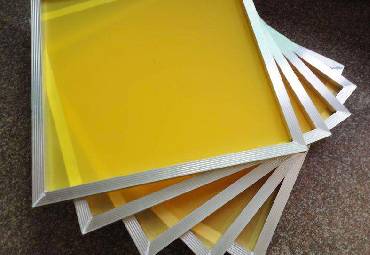What are the methods of screen printing?
Apr. 10, 2020
Screen printing is a printing technique where a mesh is used to transfer ink onto a substrate, except in areas made impermeable to the ink by a blocking stencil. A blade or squeegee is moved across the screen to fill the open mesh apertures with ink, and a reverse stroke then causes the screen to touch the substrate momentarily along a line of contact. This causes the ink to wet the substrate and be pulled out of the mesh apertures as the screen springs back after the blade has passed. One colour is printed at a time, so several screens can be used to produce a multicoloured image or design.
There are various terms used for what is essentially the same technique. Traditionally the process was called screen printing or silkscreen printing because silk was used in the process. It is also known as serigraphy, and serigraph printing. Currently, synthetic threads are commonly used in the screen printing process. The most popular mesh in general use is made of polyester. There are special-use mesh materials of nylon and stainless steel available to the screen-printer. There are also different types of mesh size which will determine the outcome and look of the finished design on the material.

Stainless Steel Wire Mesh
Printing Tutorials
Screen printing also called serigraphy or silk screening is the preferred way to print a logo, text, or artwork repeatedly on polyester screen printing mesh for fabric (or for almost any flat surface). A screen is imprinted with your design, placed on the fabric, and then paint is forced through the screen onto the fabric. There are several methods of creating the screen - from very easy & simple to more complex & time consuming, each with their own pros and cons.
Direct plate making
Methods: direct placemaking's method is in the plate making the coated with light-sensitive materials wrist sheet base photosensitive film face flat on the work surface, will stretch good wrist net frame on a flat on the base, then in a net box in the photosensitive slurry and soft squeegee pressure coating, peel off after dry fully plastic base, attached to the wrist of photosensitive film screen can be used for plate burning, after enhancement, dry will make printing screen.
Process flow: stretched mesh - degreasing - drying - peeling film - exposure - development - drying - repair - net
Indirect plate making
Method: indirect plate making way is indirect exposure film in the first place, with 1.2% H2O2 sclerosis with warm water after enhancement, drying is made after stripping graphics plate, plate when the graphic film with good screen tie-in, tense by squeeze film and moist screen paste, Jie the lower base, made screen printing screen the wind blow dry it.
Process flow:
1) stretched net -- degreased -- dried
2) indirect film - exposure - hardening - development
1and2 -- fit -- blow-dry -- repair -- net
3) direct mixing plate making method
First the photosensitive adhesive layer with water, alcohol or photosensitive adhesive on the wire mesh frame, after hot air drying, remove the film base and then print, after development processing is made into a screen.
Silk screen printing mesh supplier believes that: silk screen printing is more suitable for expressing text and lines of monochrome monochromatic colour manuscripts, and also suitable for colour manuscripts with large contrast and clear levels. Through the special effect of screen printing, the replica has rich expressive power. Through the rich and thick ink layer and the contrast of light and dark tones, the texture and stereoscopic effect of the original content are fully expressed. Screen printing is recognized and adopted by more and more industries and fields for its advantages of wide printing range, thick ink layer, bright colour, simple process, low investment, and quick results. Our stainless steel wire mesh has high strength, strong wear resistance, has certain advantages and strong competitiveness, is the leader in this industry, we look forward to working with you.







